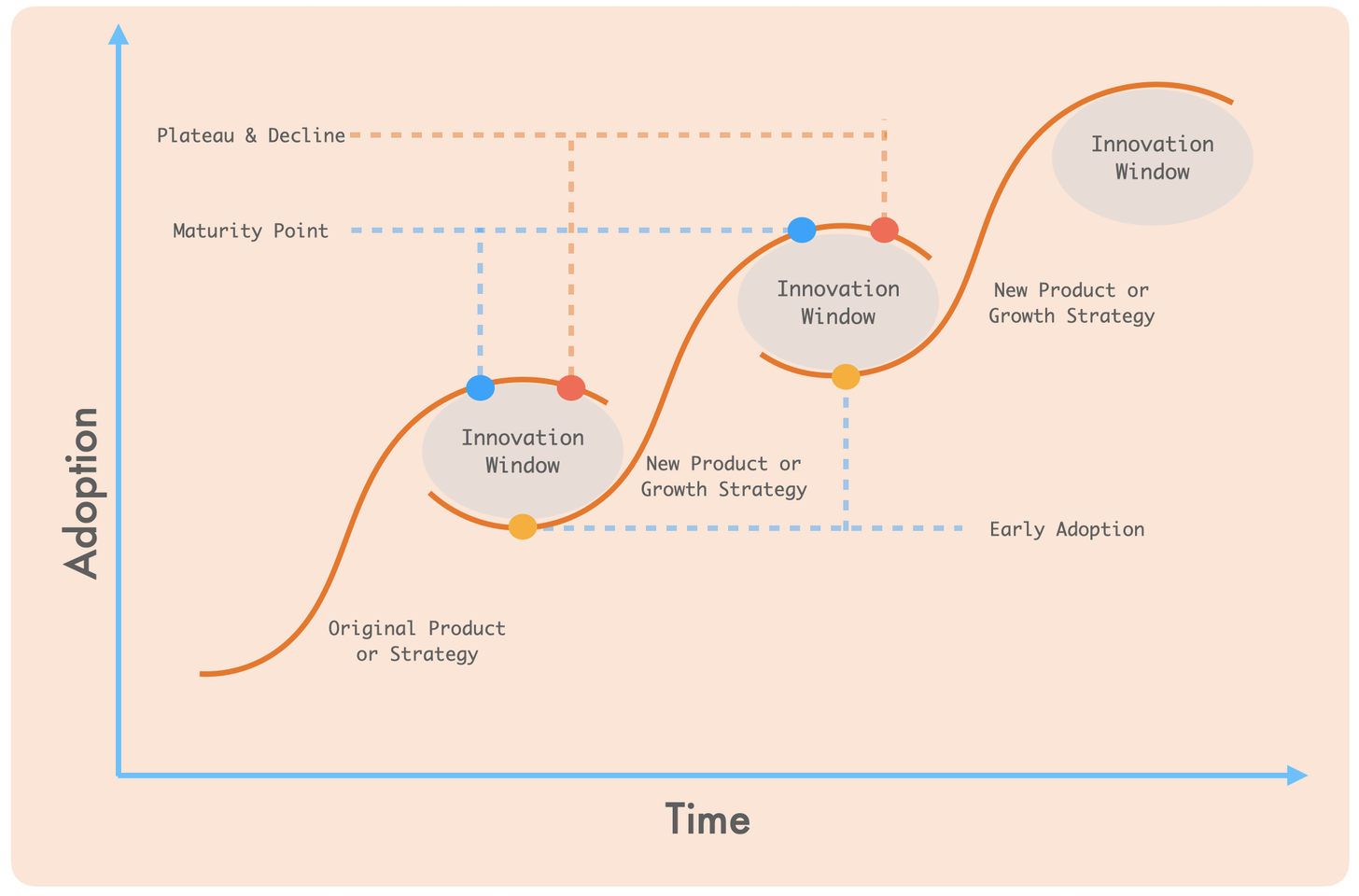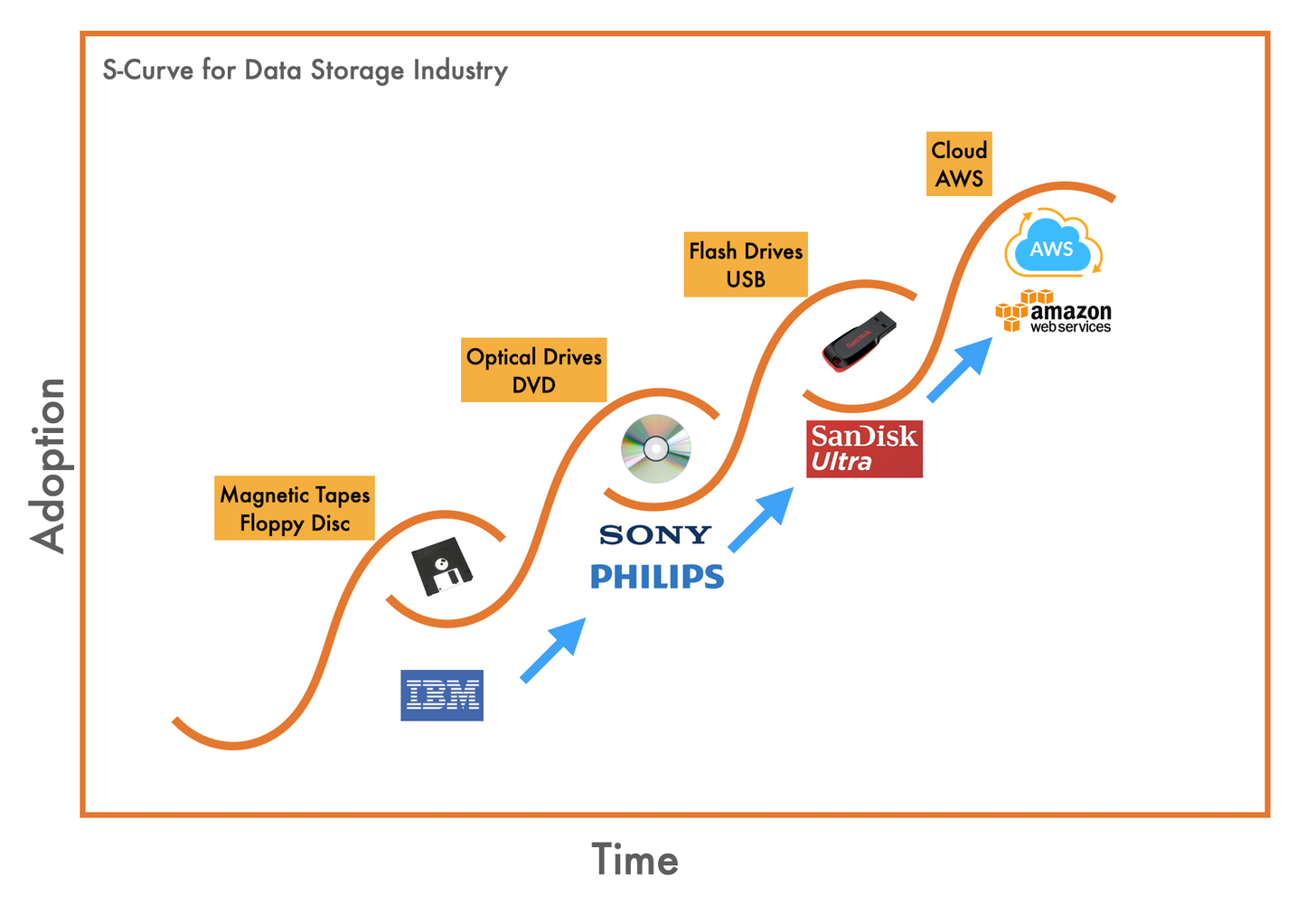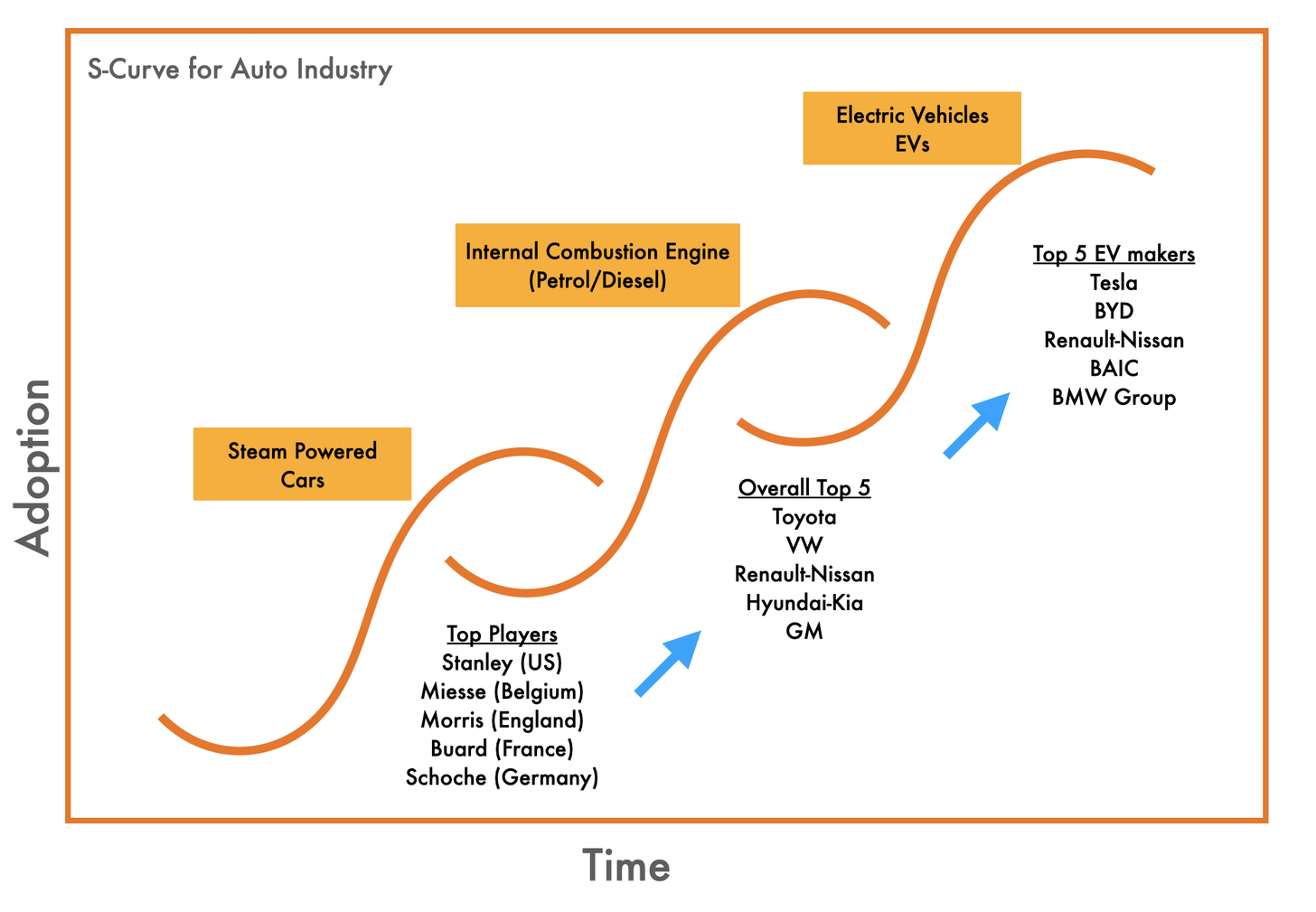Will established OEMs survive the EV revolution? (Part 1 of 2)
In this part, we will deep dive into reasons why incumbents fail in the face of disruption and what makes the EV revolution particularly challenging for OEMs
A paradigm shift in an industry always threatens the dominance of incumbent players and more often than not displaces them permanently. Particularly if the shift is around an unfamiliar territory for the incumbent.
In Summary:
-
Transition from Petrol/Diesel cars to Electric is a paradigm shift in the Auto industry
-
Established OEMs are already struggling to cope
-
New entrants like Tesla & BYD are having their field day
Let's analyse this subject with the concept of S-curve, S-Curve is a management concept in Product Innovation. For those who are familiar, here is a refresher
S-Curve in Product innovation:
S-curve, by the name, suggest is a curve in the form of the letter S. In the product innovation world this depicts the adoption rate of a new innovation over time, it usually starts small with early adopters (risk takers) trying out the product for its novelty. Once the innovation satisfies those early adopters and offers a USP which is irresistible, it enters the mass adoption phase where more and more people want to try it. That’s when the real growth starts. This phase is also referred to as "hockey stick growth", because of the hockey stick-like shape of the curve when a product transitions from early adoption to growth phase.
During the growth phase, the product gains tremendous acceptance and goes well beyond the success of the earlier product. This is when the previous product goes out of favour and becomes irrelevant. After the growth period, sustained by incremental innovations for a reasonably long period (say few decades, depending upon the industry), the product enters Maturation phase where the pace of innovation reduces and the thrill of ownership goes down.
It’s at this Maturation phase, disruptors enter the market with innovative alternates, providing a paradigm shift to the industry. The new entrant usually takes advantage of the lack of innovation at the maturation phase. Once the new entrant is successful a new S-curve starts. This is how all industry works, be it Camera industry, Telephone Industry, Power Industry, Data Storage device industry, or Automotive industry.
Data Storage industry example:
To appreciate this concept better let’s see an industry example where this S-curve has played out over the years: For this purpose, we picked up the “Data Storage device industry”
Data storage, as a concept, was in existence as early as the 18th century with Punch cards, but the serious business of data storage started when Magnetic drums/tapes were invented in the early 20th century dominated by IBM. This lasted for a couple of decades before Sony & Philips invented optical storage devices like CD & DVD, which not only improved storage capacity but also ease of use. The year 1999 saw San Disk introducing flash drives which created a new revolution in the way we store and transport data. Now with the cloud, the paradigm has completely changed, Amazon is dominating this space providing on-demand, unlimited storage capacity, and anywhere access to customers.
If you notice, it’s always the new entrants who brought in the paradigm shift in the industry. During each of these transitions, it’s not only the previous products which have gone out of favour but also the company which has dominated it. In this example, the dominant players have been continuously replaced by new ones, from IBM to Sony/Philips to San Disk to Amazon, as the technology evolved
Having understood the full effect of S-curve, let’s apply it to the Auto industry and see how this industry evolved over the last 100+ years
Auto Industry:
Auto industry has been one of the most stable industries in the globe for a long time; even this industry is no exception to the S-curve disruption.
The industry started its existence in the late 19th century with Steam engine-powered cars, which later gave way to the Internal Combustion engine (ICE) cars in the early 20th century. Now after almost 100 years, the industry is at the cusp of another transformation because of Electric Vehicles (EVs).
Here again, history shows that new players dominate the transformation, with incumbents failing to catch up. Manufacturers of Steam-powered cars like Stanley and Morris have vanished when the industry moved to Internal Combustion engine cars. Do anyone even remember these brands?, the answer is NO !!! Now with the upcoming transition from ICE to EVs, one can expect several casualties in the current pecking order. We already see it happening, out of the top 5 Electric Vehicle players in the world (Global H1 sales CY 2020) only 2 are established Auto OEMs, the rest are relatively new entrants like Tesla, BYD, and BAIC.
In fact, the EV transformation has just begun, EVs are still at the early adoption phase (bottom of the S-curve). But the time is surely running out for established OEMs, the sooner they act the better it is for them.
Hope you found this article useful. To receive automatic notification for our future articles, please don’t forget to subscribe below
Team "EV Quotient"
(EV Quotient is a platform to discuss and learn about electric vehicles. It’s an initiative by a team of experienced Automotive professionals with Global Exposure)






